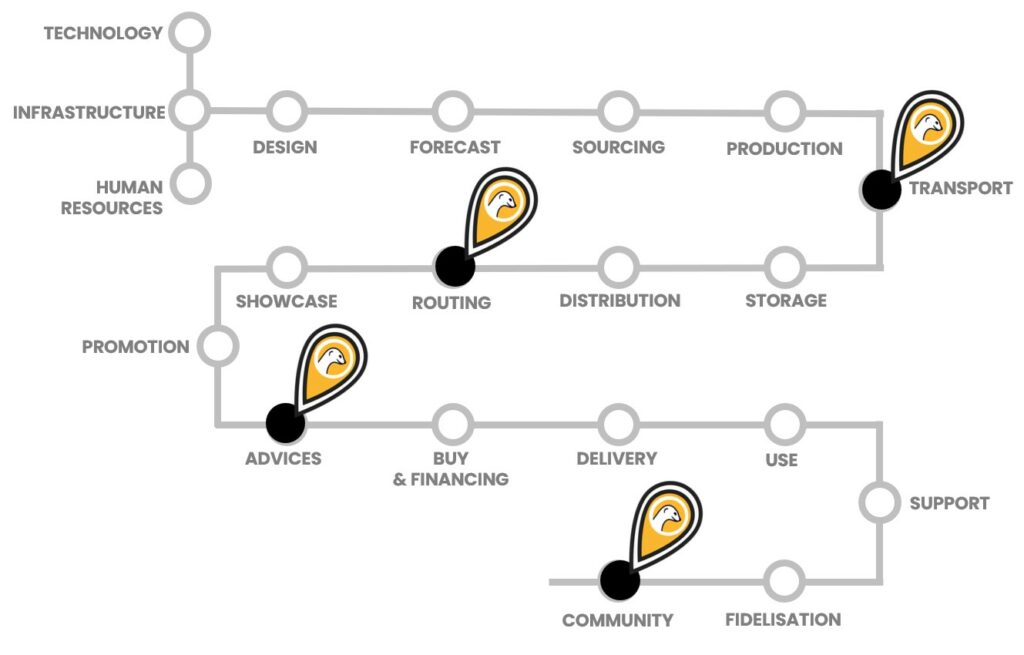The subject to be explored by the team:
A value chain is the sequence of actions, actors and their processes that are involved in the creation of a product or service.
A tool for collaboration:
The vast majority of innovations modify, with varying degrees of impact, existing value chains, such as the relocation of a factory, which eliminates transport steps, or, on the contrary, home delivery, which adds a transport service.

It is essential for a team to quickly visualize the value chain(s) in which the project’s results could be integrated in order to define 1/ which steps are potentially impacted, 2/ how to interact with the chain’s stakeholders who will be impacted. If the project involves a new digital service in a retail chain, it will be necessary, for example, to ensure that the service is compatible with the existing systems used by the stores. The diagram above is an example of a representation of the steps that would be modified in a classic product creation value chain.
To go further :
A value chain can be modified, increased or decreased, according to 2 dimensions: 1) the size of the chain (or the number of steps), 2) the quality/complexity of the processes. Extending a chain to add services, such as “Le Bon Coin” which offers an additional delivery service, implies more risks (loss of the parcel, whose responsibility is it?) and therefore more costs in the chain’s operation. Upgrading a product, thanks to new services, also increases consumer demands, which can have an indirect impact on other stages of the chain. “Short-circuiting” a stage in the chain or choosing to manage this stage directly allows for improved product traceability and therefore quality monitoring, but implies new know-how that is costly to acquire, etc..